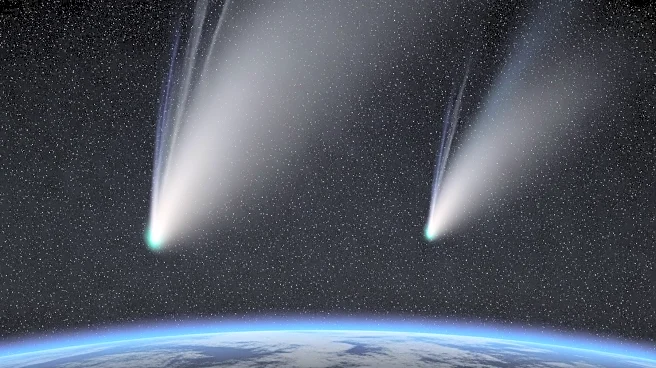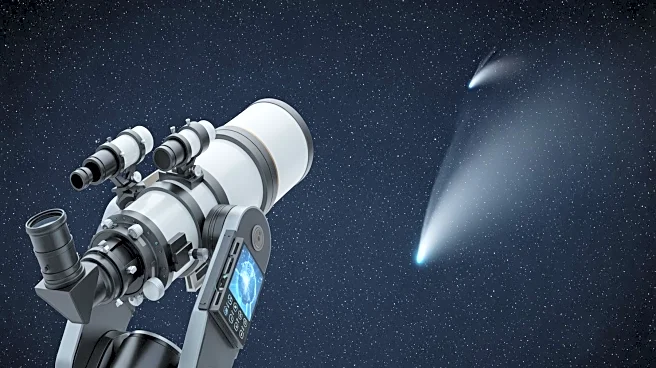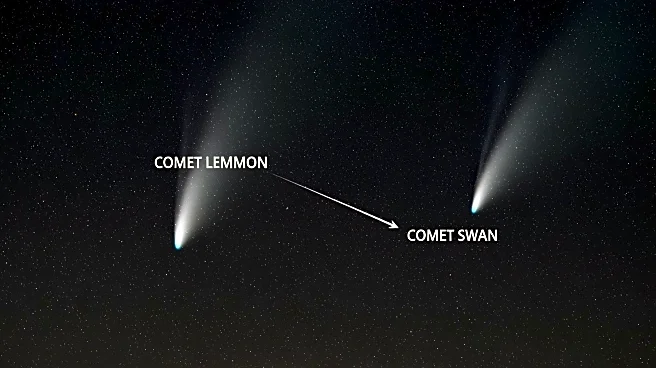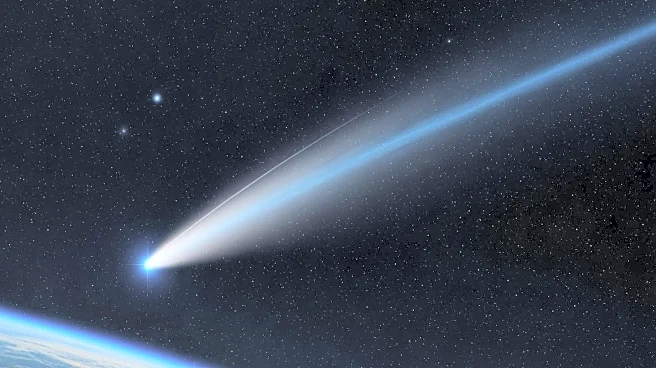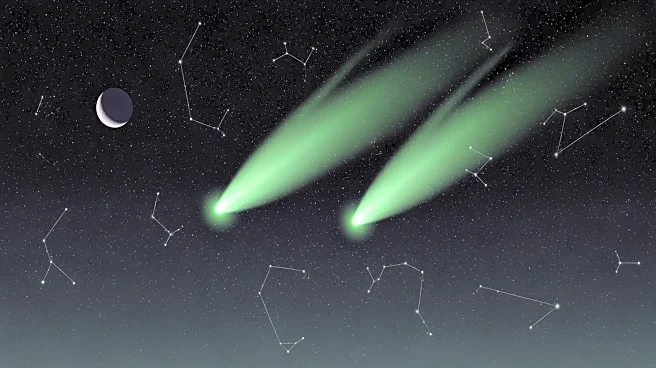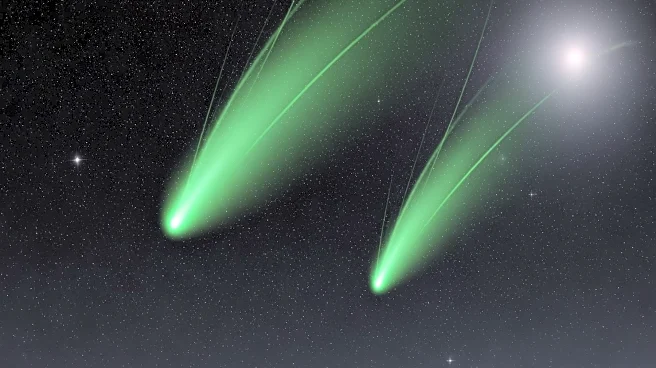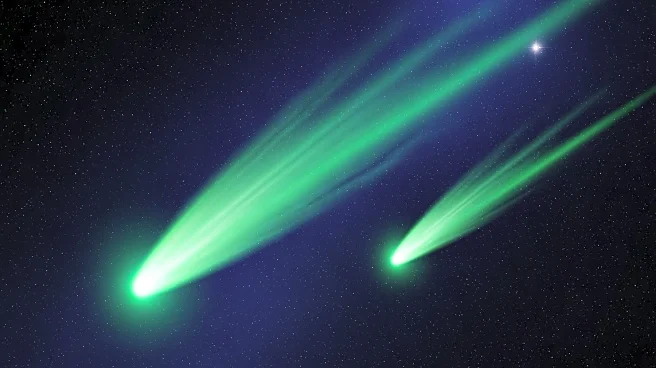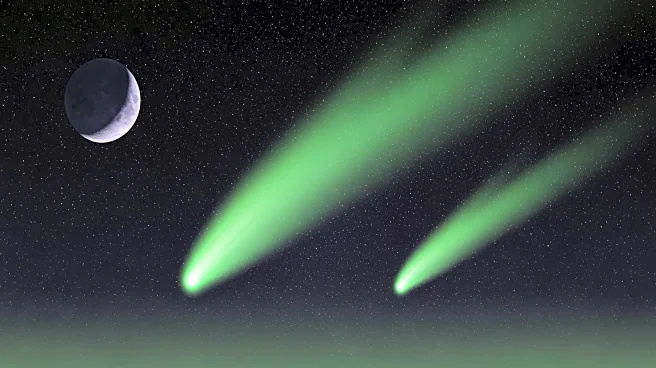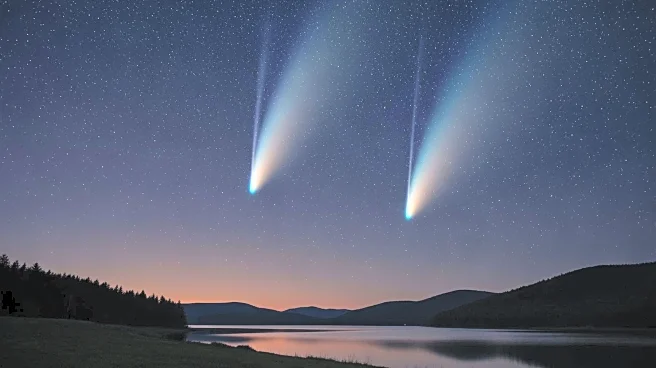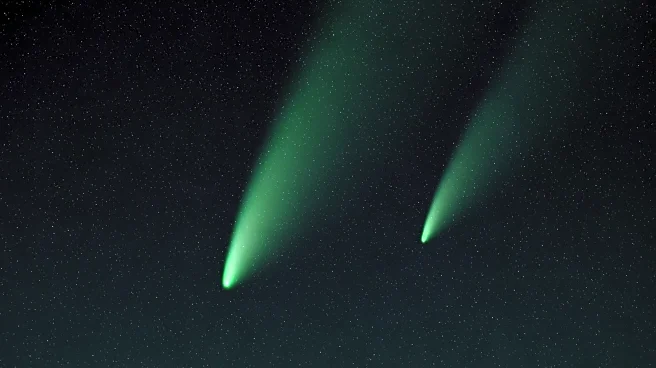What's Happening?
Comets C/2025 A6 Lemmon and C/2025 R2 SWAN are set to make their closest approach to Earth, providing a rare opportunity for observation. The Virtual Telescope Project, led by astronomer Gianluca Masi,
will host a livestream event on October 20 to capture this cosmic event. Comet Lemmon will pass approximately 56 million miles from Earth, while Comet SWAN will come even closer at about 24 million miles. Both comets are expected to peak in brightness between October 20 and 21, making them visible to observers with binoculars or small telescopes. This event is notable for the simultaneous visibility of two comets, offering a unique experience for astronomy enthusiasts.
Why It's Important?
The close approach of Comets Lemmon and SWAN presents a rare opportunity for astronomers and the public to observe these celestial bodies. Such events can provide valuable data on comet composition, behavior, and trajectory, contributing to the broader understanding of solar system dynamics. The visibility of two comets at the same time is an uncommon occurrence, enhancing interest in skywatching and potentially inspiring future astronomical research. This event also highlights the importance of public engagement in science, as live streams and online resources make astronomical phenomena accessible to a wider audience.
What's Next?
Following the close approach, astronomers will continue to monitor Comets Lemmon and SWAN to gather more data on their trajectories and characteristics. Observations may reveal new insights into cometary behavior and their interactions with solar radiation. The Virtual Telescope Project's livestream will provide real-time updates and visual documentation of the event, contributing to ongoing research and public interest in astronomy. Future comet encounters may be anticipated, offering additional opportunities for study and observation.
Beyond the Headlines
The simultaneous visibility of Comets Lemmon and SWAN underscores the dynamic nature of the solar system and the ongoing exploration of celestial phenomena. This event may inspire increased interest in amateur astronomy and the use of technology to observe and document cosmic events. The accessibility of live streams and online resources democratizes science, allowing individuals worldwide to participate in astronomical observations and discussions. Such events can foster a greater appreciation for the complexity and beauty of the universe, encouraging public support for scientific research and exploration.
